#colonial gravestones
Explore tagged Tumblr posts
Text
old new england cemeteries in autumn….save me old new england cemeteries in autumn. you’re my only hope
#sometimes you just have to go look at the gravestones of people who died in the 1600s. to cope.#like yeah my life may be bad sometimes but at least i’m not#[squints at grave] judson jr aged 5 who departed by cartwheel going over him in the year 1805#just me and a random old man napping in a lawn chair in the local colonial cemetery this fine sunday morning
20 notes
·
View notes
Text

Almost gone.
Savannah Colonial Park Cemetery.
Savannah, Georgia
Nov. 2023
#savannah#cemetery#colonial park cemetery#headstone#gravestone#georgia#tomb#original photography#photography#taphophile#taphophilia#lensblr#photographers on tumblr#cemetery photography#wanderingjana
7 notes
·
View notes
Text




Western Cemetery, George Town, Malaysia.
#cemetery#graveyard#gravestones#malaysia#asian#george town#penang#western#tropical#travel#graves#victorian#history#colonial era#colonial history#british history#english history#malaysian history
4 notes
·
View notes
Text
on the one hand I do understand where people are coming from when they respond to The White American Desire For Authentic Culture by going "you already have a culture" and pointing out that this desire often has reactionary undertones
that being said, I think it's largely sidestepping the actual issue, which is that American culture fucking blows chunks. American culture is strip malls and military worship and the elevation of mass-market pablum to Bold Artistic Statements.
and subculture is only partially an escape from this, because most subcultures exist within the same constraints of American culture as a whole; they are captured and redefined by capital on such a frequent basis that it often feels impossible to hold onto them in any meaningful way.
moreover, even the parts of American culture that aren't complete garbage are more or less inextricable from the colonial, imperialist, and racially-stratified history of the country. like, I think of that post that went around a while ago talking about "America sucks but has some good parts," and one of the things it listed was national parks, and people (rightfully!) pointed out that the national park system is fundamentally flawed and tends to shit on indigenous nations by design.
the only thing I can think of that's even sort of an exception is pop culture - jazz and rock music, superhero comics, Hollywood. and all of those are, again, captured and defined by capital, and in one way or another have historically been built on screwing over the artist.
so we come to a position, one way or another, where a lot of people say something like: "I'm alienated. I'm surrounded by traditions and institutions I think are shit; I have no way to meaningfully undermine them, and I can't escape them without effectively destroying my life. the culture I was born into is a gravestone on top of another gravestone, lifeless and miserable, and people are constantly shouting that I should be grateful because it's The Greatest Country In The World."
at that point, one seeks an escape, and I think there are three major routes here.
one is to become a weird lib obsessed with the Real Soul Of America. America is really about the good parts, not the bad parts which outnumber them and which they are built upon.
another is to fixate on the Exotic, for lack of a better word. cultures which you do not have an obvious "connection" to, but which fascinate you or appeal to you. obviously this can be pretty fucking fraught, though I would argue that taking an interest in other cultures is a good thing if you aren't shitty about it. (That's its own conversation.)
the third is to fixate on the culture(s) you feel you "ought to have" had, that which was sacrificed on the altar of whiteness by grandparents or great-grandparents who, frankly, had different concerns. to look at a culture that may still be defined in many ways by cruelty and stratification - the way I would argue most human civilization has been - but that seems to have had something else going on, at least. a culture that may not have been recognizable 500 years ago, but at least it existed.
again, none of these impulses is beyond criticism, and I think it would be naive to say that the last one can't have reactionary undertones. I also doubt these impulses are unique to the USA! alienation is extremely common in today's world, and it's not as though the USA is the only settler state in existence.
what I am saying is more that I think the conditions that lead to these fixations are worth paying attention to, and that dismissing them with "you already have a culture" kind of misses the point in favor of getting in a zinger. people wouldn't want a different culture if they were happy with the one they had. like so many other things, people want one that Doesn't Completely Suck. failing that, they'd probably like to not be defined by any culture at all - but that, tragically, is just as impossible.
#related to the post i just rb'd obviously#idk. i don't know how Developed these thoughts are but they're bouncing around in my brain
803 notes
·
View notes
Text
Analyzing the New Nocturne Trailer
Alright: I promised some folks yesterday to make an analysis for the new trailer - so I am going to do just that. Fair warning: this will not have a whole lot of historical details, because I think there is just not enough about historical context in this trailer to talk about that. So more... general influences and speculations.
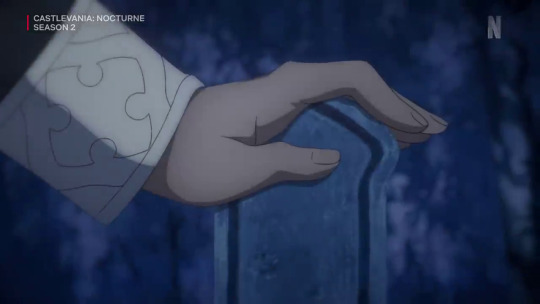
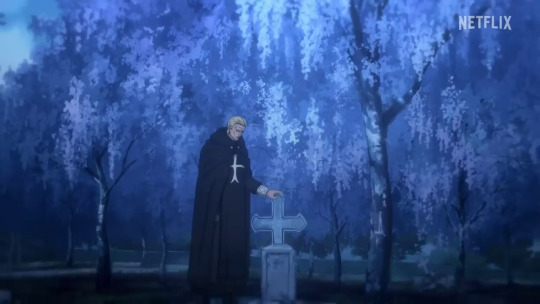
We start the trailer off with Emmanuel standing by a grave during what is either a night or still the eclipse caused by Erszebeth. It is impossible to say. Sadly, there does not seem to be any name on the gravestone (if it even is that), so it is hard to say who it could be. Someone on a server speculated that it might be the empty grave of Tera's sister (I doubt she managed to drag the body from Russia to France), which I could see. It could also be that we learn something more about Emmanuel's backstory.
From all we got implied, Emmanuel joined with the Knights Hospitaller when they were on Malta, so he was not with them in Jerusalem. We can also say that he is Frenchman. So there is something going on with him giving him the background of him and the hospitaller.
Something else of note: This grave is underneath a Wisteria tree. And Wisteria's are connected either to youth/something new or it is a symbolism for a deep devotion. The latter probably fitting rather well with Emanuel.
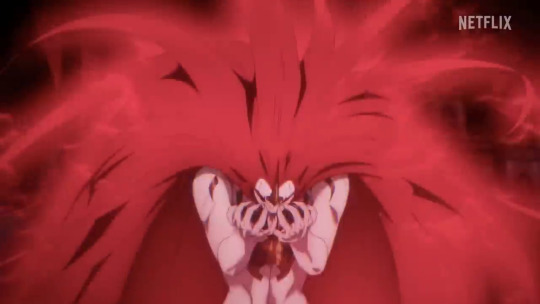
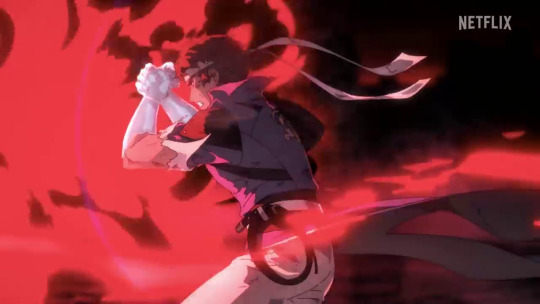
Next we have these few frames of Erszebeth in her lion form fighting Richter. Something that is interesting to me in this one: It almost feels here as if Erszebeth has no control over her power. Which would make sense, because it is heavily implied that she stole Sekmet's powers by drinking from Sekmet.
I am spitballing here, but something tells me that Olrox has drunken from Quetzalcoatl in a consensual way (almost guessing it was so that a dying god could live on), while in Erszebeth's case it was more an act of colonialism of some sort.
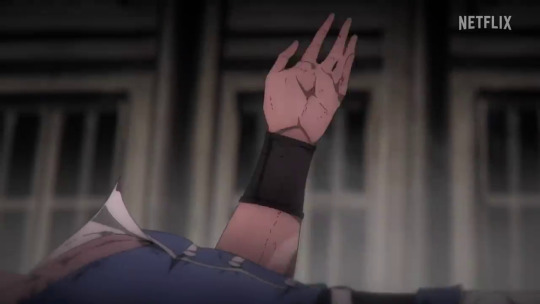
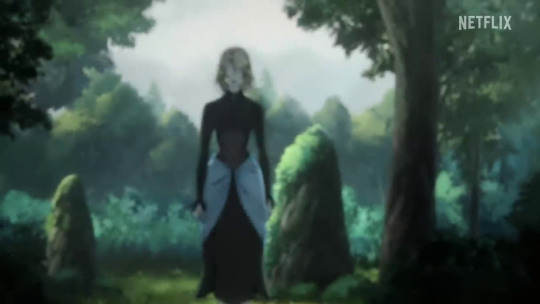
We have next these two very short flashes. Richter down on the ground and bleeding - and then Tera attacking. The trailer of course implies that Tera is implying a Richter who went down. But the background is different. Tera is somewhere in the forest in what appears to be some celtic ruins (more on that a bit later), while Richter is on some city street.
I am fairly certain actually that the Richter scene is fairly late in the season.
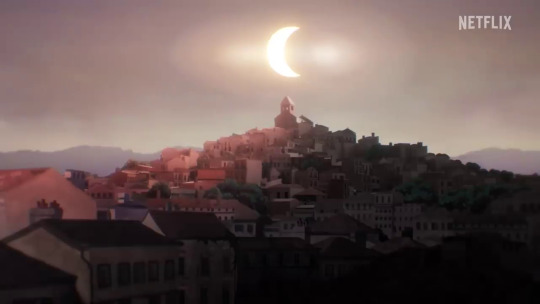
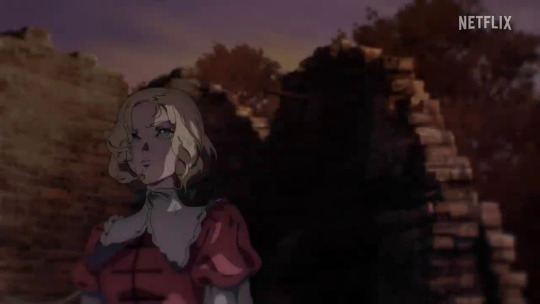
We then have the eclipse ending. I am very interested to know the context of this. It seemed in season 1 as if Erszebeth wanted to keep the eclipse just eternally to protect her vampires - but maybe she also understands that she cannot do that given she has also human followers.
We also see Maria (probably in the company of everyone else) hiding out at some ruins.
If I was going to hazard a guess, this is a scene within the first 5 minutes of episode 1.
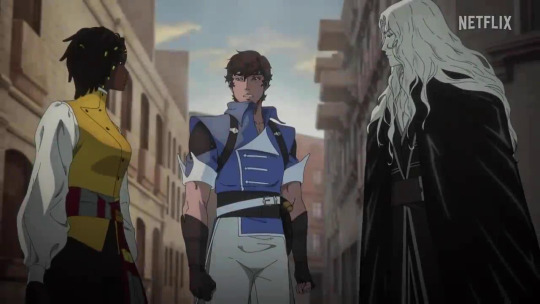
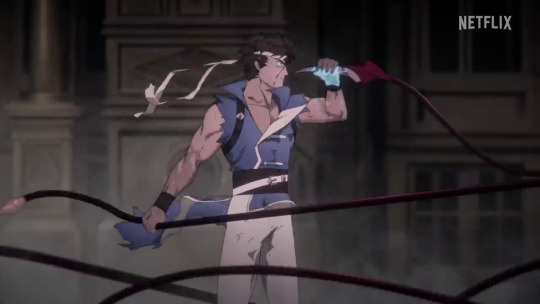
We have then a few quick shots of first Richter, Annette and Alucard together. Then one of Richter fighting what is clearly Drolta. And then one... that could be either Drolta or Tera from the clothing. Though given that Richter has the same ripped off sleeves as in the Drolta fight, I am gonna assume it is Drolta.
This goes doubly, because the background here is the same as in the fight of Alucard and Drolta later in the trailer.
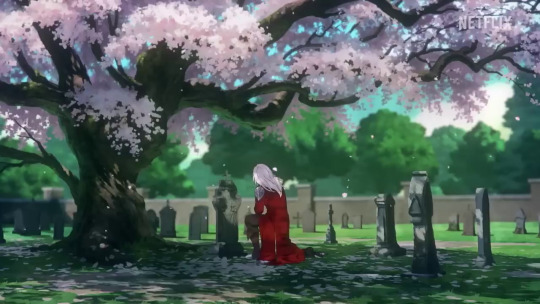
The we have another grave scene with flower imagery. In this case we have Juste in front of a grave. Once more there is no name to be seen on the grave, but I have seen a lot of speculation - based on what happens in the game - that it might be Lydie's grave, while Maxim is either a vampire or a werewolf now.
We will see, I guess.
There was also a discussion on the server on what the tree was. Is it plum or cherry. I am gonna say, this is a Kanzan cherry tree, given that the stigma is not as pronounced as it would be in a plum flower. And the Japanese cherry tree is obviously a symbol of fleeting youth and fleeting beauty.
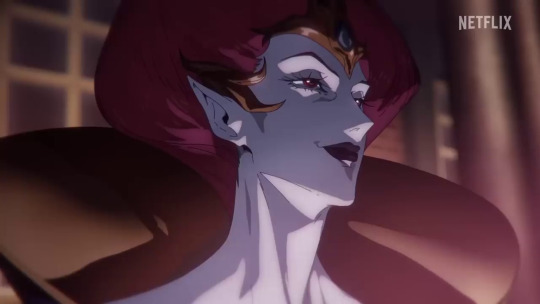
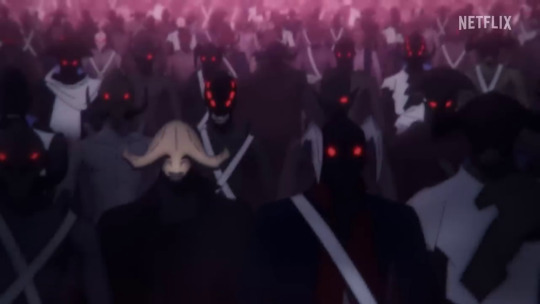
Then we have a shot with Erszebeth mustering her new army. Notable about this is that Erszebeth is back to her normal vampire form in this shot - and that it seems now that she has a whole lot more night creatures now. Has Emmanuel figured out how to createm ore night creatures, or if she has found another way to acquire night creatures. We will see.
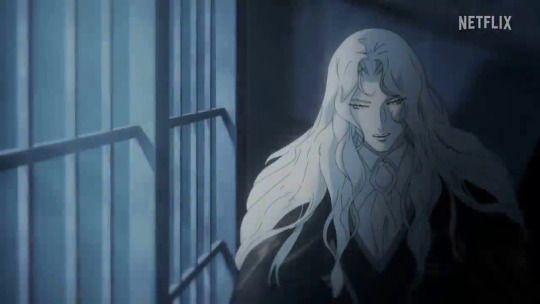
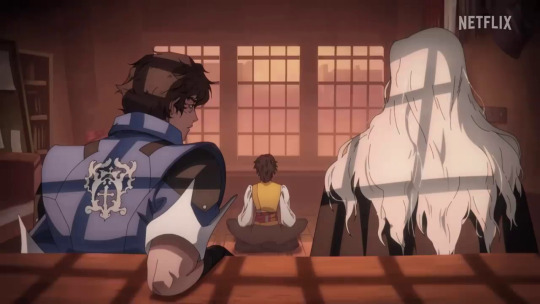
We have also several scenes of our main characters in this building. There are several shots of this. And this does not seem to be Tera's home, given that the windows look different, if I am not fully mistaken. So that leaves us the question: Where are they here? Who allows them to stay with them?
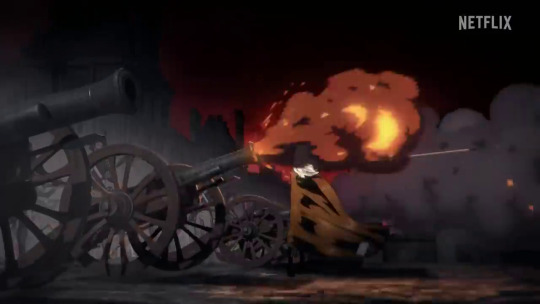
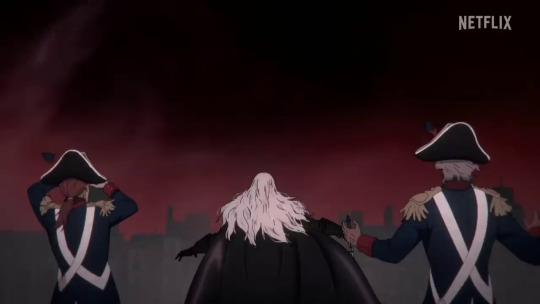
Then we have these shots of Alucard on a warfield surrounded by soldiers. We see later that they are fighting against the vampires lead by Drolta, who is not dead. (I might note: As I said. I told y'all that Drolta was not dead. It was obvious.)
Notable about this scene is that Alucard is surrounded by Republican Soldiers. So soldiers who are loyal to the revolution. While at this time the royal soldiers and the revolutionary soldiers wore fairly similar uniforms, the hats are notably different.
So we can tell from this, that our heroes manage to get the revolutionary forces up to Machecoul. I am wondering how that is going to happen. Who will get this support?
Either way, I am gonna hazard another guess: This is from the last two episodes of the season.
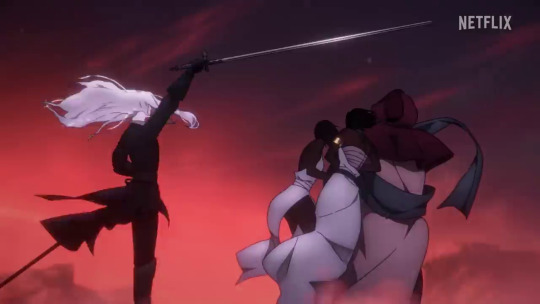
Something that seemingly also happens on the battle field is Alucard attacking these three figures. All three are dark-skinned and Alucard attacks them. Two of them also clearly wear ancient egyptian garbs. And that implies they are somehow connected to Sekmet, either through Drolta or Erszebeth. I am really interested to see what is up with this.
I said this before: The reason I was fairly certain that Drolta was still alive was two fold. One: Drolta is Katie Silva's favorite character. lol Two: Drolta is clearly very heavily connected to how Erszebeth has gotten access to the blood of Sekmet, given that we know that Drolta was a priestess of Sekmet. So she kinda has to survive given that she will be important to understanding Erszebeth. :P
I am still somewhat wondering whether she will be loyal to Erszebeth and such.
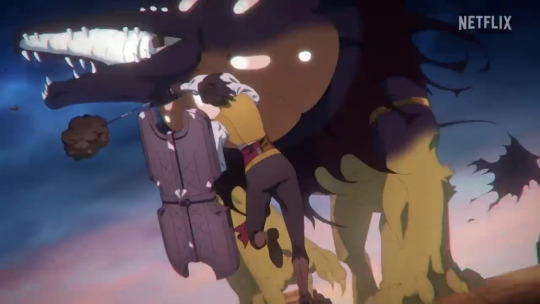
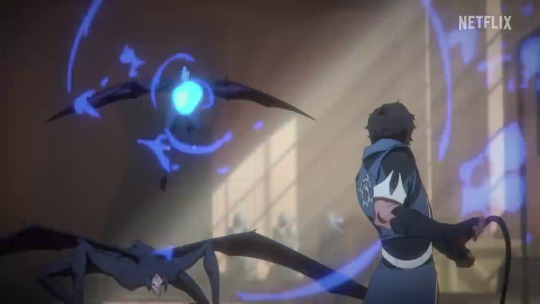
Then we have some shots of Richter and Annette fighting some night creatures (though one of them might also be Drolta in a monster form - we will see - given it has the same tail as her, and hooves). One of the fights is happening in the church again.
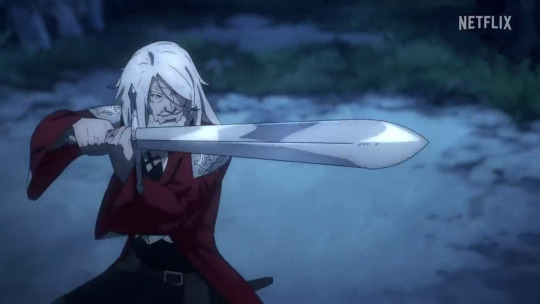
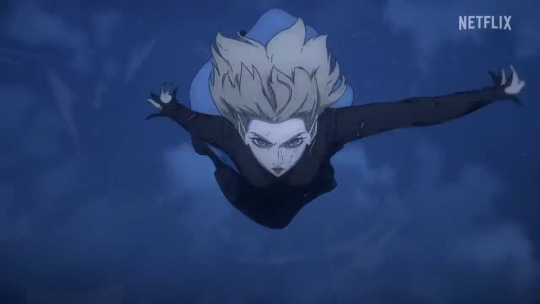
Then we have this scene of Juste and Tera fighting. Again, this is a celtic place, given the stones - and I am fairly certain that this is the same place where Maria has her little revolutionary meeting in episode 1 of the first season. We had those celtic stones standing around there as well. Which is obviously interesting given the themes of colonization and the fact that they have been colonized as well.
It is obviously also interesting that Juste is fighting Tera - clearly to take this from the kids.
Something several people have already noticed though is that Tera in these scenes seems to be under some sort of control. Her eyes are flat and empty.
I might also remind you though, that we have so far very little information on how vampires and fledglings work in this world. In a lot of vampire media it also is a theme that fledgling vampires in the first months/years of their life being fairly hard to control and more animal than person. This might be a possibility here, too.
It could be that Tera is controlled by Erszebeth, but it could also just be that she is a fledgling in a sort of blood frenzy or something like that.
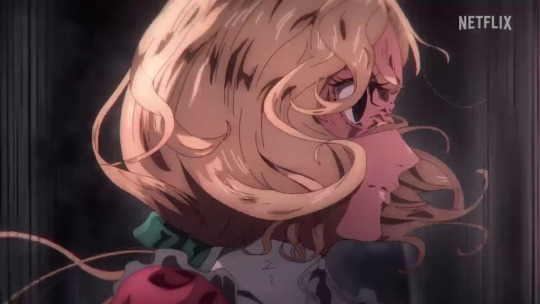
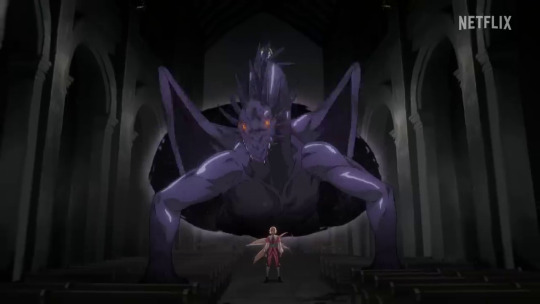
Then we have this scene with Maria and Seiryu in the church. It is clear from Maria's gaze here, that she is either in a deep shock, or really, really angry. From all we know she never summoned Seiryu before. And we see also that the portal she summons Seiryu through is nothing like the other portals she uses which are light and golden.
However, this portal is a lot like the one we see on the poster that went around yesterday, where a bear comes through the portal.
Now, I am fairly certain that with the summons they go with the same direction that I and a lot of other writers use: The summons she is using are somehow connected to the otherworld, which in this probably connects not only celtic spirits and fae, but pretty much similar concepts from all around the world.
But the thing is, as I said: The bear usually in East Asian mythology is a shorthand for "a god". And of course dragons in Asian mythology are also minor gods. And I am going to assume that this does tie in once more with the theme that we clearly have: Divine bloodlines. This is a divine bloodline as well, that ties Maria to the Asian spiritual gods.
But she is very much not in control over those powers yet.
We know that she never knew how her magic worked. She explains that much in episode 2 of the first season. And given that this is so clearly a theme of Nocturne... Yeah, that is going to be tied to that.
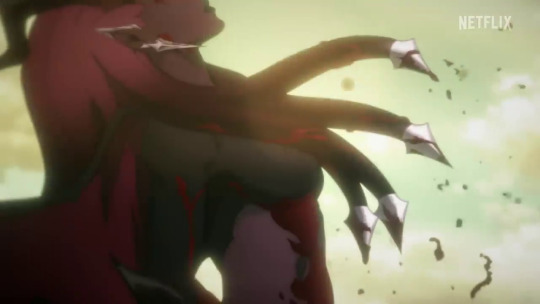
Then we also have this shot of Drolta and her knew outfit. I will be honest, I have nothing much to say about that. She once more has the horns - and again: Drolta is not a vampire, she is a succubus. And as such we do not know what kind of rules might apply to her.
As you might notice on the screenshot above: It is fairly bright in the background. And she does not use anything to protect herself from the sunlight.
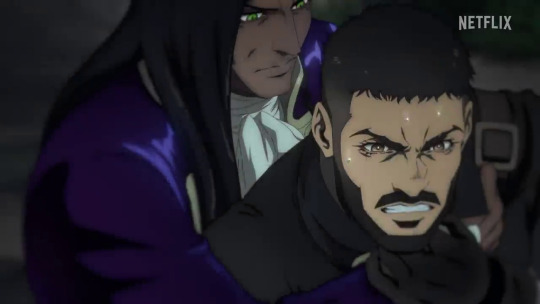
Then we have another scene of Olrox holding back Mizrak, which is notably the only time we see either character in the trailer. (It should be noted that Edouard, my baby boy, is completely absent from the trailer. Q-Q) It is fairly hard to say what the context of the scene is. So far I do not see anohter scene with a similar background, so it is really hard to say.
Some part of me is going to assume that Mizrak might be the reason that the revolutionary forces are there for the big battle. But that is once more just me spitballing. He just seems to be the most likely character to get those soldiers there.
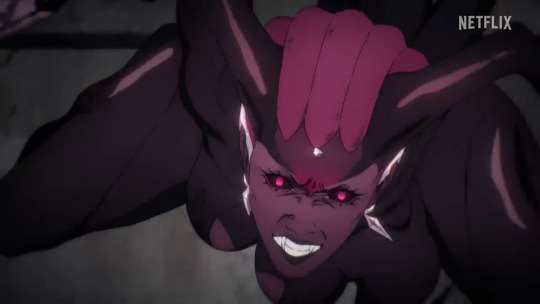
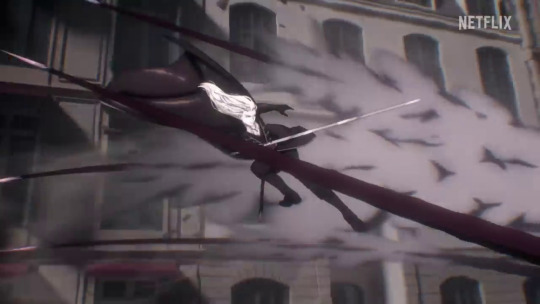
Then we have several scenes of Drolta fighting. Some of the shorts show her on the battle field, some of them are her and Alucard (who shape shifts into a bat swarm during it). And once again: I am fairly certain that the earlier scene of Richter on the ground happens in the same scene of Alucard and the shape shifting here.
Again: I am going to assume that Drolta will probably show up in episode 3 or 4 again, after the fakeout death, and that they will have some bad fights against her and Erszebeth, and that the revolutionary forces will show up for the finale of the season. That would make the most sense from a writing perspective.
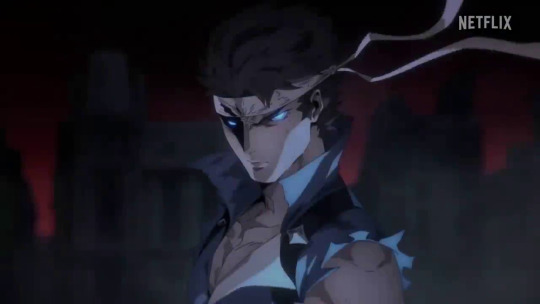
Lastly we have also this shot of Richter. This also probably happens in the context of the Drolta dight, as it is fairly clear he looses his sleeves in that fight.
But yeah, that is so far all I could get from the trailer.
Cannot wait for season 2.
Also: I am very sad that I did not get to see my baby boy Edouard. Where is my son?!
#castlevania#castlevania netflix#castlevania nocturne#castlevania analysis#trailer analysis#screenshots#richter belmont#maria renard#castlevania tera#castlevania annette#castlevania alucard#castlevania drolta#vampires#french revolution
65 notes
·
View notes
Text
A Girl And Her Dog - A tribute/fuck you to "A Boy & His Dog," Viktor Blud is the telepathic despot of the Gravestone River, but that won't stop Rosalie and her dog Champion from going after him to take their revenge. Champ is more of a borzoi pangolin monstrosity than a dog but let's not get picky. The setting is a sort of post apocalyptic weird west on the planet where gods go to die. As seen in Lisa Frank Gulch.
Short Change Hero - Down on her luck two and a half foot ex-allotment farmer turned hopeful adventurer turned disillusioned bouncer / part time leg-breaker Obsidian Bonesplinter didn't want to rock the boat but when her old family shows up in the magical city Eliriad they get caught up in a bad way. Now she's got a dead body to explain and a murder to solve if she doesn't want the cops to pin it all on her and the only roommate she ever had with a steady job. A hardboiled noir mystery taking place in a fantasy world of magic and elves and fantastical creatures.
Saw Down Heaven - Follow up to Girl Bites God, a ragtag band of queers and superhumans try to drive police out of their local community and set up a patrol free zone outside of the reach of law enforcement and, worse, the FCC. With the help of the mutant ringworm colony and hole in reality which together animate the undead corpse of Alice Buzzsaw (aka the Suicide Gorgon) and escaped mental patient AthenA Six, maybe they can pull it off. Takes place in the disentangled world, a setting where our world is slowly being folded into a parallel reality where physical matter never existed.
128 notes
·
View notes
Text
I cannot state enough, if you are a writer and focus on colonial North America. One of the best resources to understand some of the daily life and material culture (things people interacted with) is James Deetz: In Small Things Forgotten. While yes it has a historical archaeology basis, I've learned so much about dining utensils, dining habits, gravestones and their meanings, and so much more.
#for my historical writers#it's easy to find for free and download#18th century#colonial history#material culture
9 notes
·
View notes
Text
hey guys, episode is leaving early access tomorrow at 6:30 CST but i would love if you guys supported us on patreon to listen early anyway!
This episode of our series on the Congo is all about the colonial roots of the national park system and the story of Ota Benga, the Mbuti man enslaved and put on display in the Bronx zoo in 1905. really harrowing stuff, and also we found out you can find the address of the gravestone of the guy who enslaved him on Google for free btw
166 notes
·
View notes
Text
In the face of eternity, we found solace with each other
Request from anon who wanted to see me write some Vuzi.
Summary:
200 years had passed since the Absolute Solver had been defeated and peace was brought to Copper-9. things like eldritch AI, JCJenson (IN SPAAAAACEE!!!!) and disassembly drones had become the stuff myth and legends. Two drones remained that remembered what used to be and what they had lost. And tonight, they were on their way to make a visit to a special, never forgotten friend.
It was a rather beautiful night on Copper-9. The usual storms had subsided for clear skies and a cold, but calm breeze. At this hour most Drones had retired into their homes for the night. Families spending time together and enjoying the peace their world had achieved in the last two centuries. But not everyone was at home. Two Drones walked on the lonely road, walking towards where the Old Colony used to be.
One of them – V, a former Disassembly Drone – noticed her companion had been quiet for a long time. Normally, she wouldn’t shut up. “Hey, you okay, Uzi?”
No answer. Uzi Doorman kept her gaze on the road, her expression in deep thought.
“Hey, Purple thing!” V smacked her cane against Uzi’s side, nearly making herself topple over. No matter how many repairs she underwent, her leg never did back to the way it was after she had survived the Sentinel attack, all those years ago. Small price to pay for peace …if she didn’t count all the rest as well.
Uzi snapped out her thoughts and gave V a sheepish grin. “Y-yeah, I’m fine…” she began. She let out a long, wistful sigh. “It’s just …you know?”
V smiled softly. “Yeah …I know.” She paused for a moment. “You still wanna do this?”
“You know I do, V.”
“Yeah, still wanted to ask for prosperity’s sake or something profound like that.”
“That doesn’t make sense.”
“Neither do you most of the time, and I’m still here, aren’t I?”
“Bite me.”
“Later.”
The two giggled, soon falling back in a comfortable silence. This night marked the 200th year of the Absolute Solver’s defeat and the end of the horror Worker Drones endured under the constant threat of Murder Drones coming for their oil.
Yes, they had won that day …and lost just as much. N …hadn’t survived the fight. He had given his life, so that Uzi and all the Worker Drones of Copper-9 had a future. Uzi had hated him for that, as well as she loved him for it. Even 200 years later, it still stung, even if she had a happy life, despite it all.
Uzi and V soon reached their destination: a hill overlooking the Old Colony, where a grave stone was erected. N’s gravestone. Uzi knelt down in front of it, with V resting a hand on her shoulder to give her a comforting squeeze. Neither Drone uttered a word. No tears, no one-sided conversation, no flowers – not that they’d survive C9’s poison air – or anything else. After two centuries, there was nothing new to say …just the comfort the yearly routine brought them. Something to remember everyone they’d lost.
V and Uzi were probably the only Drones left of that generation. Their relationship always had a rocky start, but things escalated soon after the defeat of the Solver. When V was found a few days later after that, Uzi had been livid. N was gone, but V had somehow managed to get away from the Sentinels and only ended up with a busted leg? It didn’t seem fair to her and she had screamed it in the Disassembly Drone’s face.
Meanwhile, V blamed Uzi for essentially making her the last of her kind. Not only was N gone, but J …hadn’t taken the news that Tessa never was Tessa too well. In a fit of madness, the workaholic Drone had charged at the Solver, trying to hurt it for taking away her Tessa. She went out quick, but fighting.
They didn’t spoke to each other in weeks, but as time went on they couldn’t just keep ignoring each other. They both needed to mourn and no-one could better understand what the other was going through than …well, one another. So, they started small, with apologies and went on from there. Small talk become conversation and conversation eventually evolved into a true friendship.
But they would soon find out how much more their lives had changed. After they had defeated the Absolute Solver – and after they had given N a proper burial – the first change they noticed was the lack of hunger for oil. No longer did they needed liquid sustenance the Drones’ life blood provided. But it would be years before they’d notice the other, permanent change in both of them.
A worker Drone didn’t age in a traditional, but still their programming evolved with the years, in a way maturing as time went on. Their bodies also aged, that was just the natural way of Dronekind. Parts and component would wear out, repairs and regular maintenance would become less and less effective. Eventually …a Worker Drone would reach the end of its life and …die.
Not Uzi.
Not V.
They remained as they were, their bodies and programming frozen in the moment Uzi severed the connection between them and the Solver. Forever young, forever going. Uzi had tried to deny it, but as time went on she couldn’t ignore the signs. It all seemed to go so fast. Her dad got older, his memory started to fade and eventually came the day that she had to bury him. All of their friends – Lizzy, Thad and many others – graduated, got married, started families, got older and …well, it was just the natural way of life.
For them.
Not for Uzi. Not for V.
As time went on and more of their friends grew old while they remained young, it really started to feel like all they had was each other. And soon, friendship blossomed into something more and it wasn’t long before they shared their first kiss witch each other. It wasn’t until their last friend’s funeral that they decided to move away from the Colony. They found a little place, far away, to make their home together.
And time went on as always. With the humans extinct and no eldritch AI trying to destroy all sentient life in the universe, the Worker Drones of Copper-9 were ready to rebuild their civilization. Soon, ruins were rebuild and new cities rose from the ground. Drone life flourished on Copper-9. And soon, history became the stuff of myth and legends.
The present day Drones didn’t know about the Absolute Solver, JCJenson (In Spaaaace), Disassembly Drones and all the horrors of the past. It were scary stories to tell the dronelings before they went to bed, or something conspiracy theorists made poor-quality videos on Dronetube about.
All that was left of that era were two Ancient Worker Drones who hid in plain sight, and a gravestone hidden away.
V waited patiently as Uzi watched at N’s grave, her expression soft and sad. With a heavy sigh, Uzi eventually stood up, dusting off the dirt of her skirt. “Okay, I’m done. You, eh …want to say anything?”
V shook her head. What was there to say anymore? She missed him, as she did all their friends they had buried. But she was at peace and she knew he was too. She held out her hand. “Ready to go home?”
“One more thing….”Uzi said with a smile, taking hold of V’s hand. As she pulled herself towards her beloved, she raised herself on her tiptoes and planted a kiss on her cheek. “Okay, now I’m ready.”
“Careful there, Zi.” V warned playfully, blushing. “You might make N jealous.”
Uzi chuckled, but her expression soon turned worried. “Hey, eh, do you think…”
V titled her head. “What?”
“Nothing, it’s dumb.”
“Tell me, Love.”
Uzi bit her lower lip. “Do you think …do you think that N would …approve of us?”
“You know my answer.” A soft smile tugged on V’s lips and she pulled Uzi into a gentle embrace. It wasn’t the first time she had asked that question. It was only natural, considering the history she had with N, despite never haven gotten the chance to become a couple themselves. The first time the question came up was not too long after they officially had become a couple. She had repeated the question a few times after that. Then it came up a few times a year. Once a year. Once every few years. Once a decade.
Every time, V’s answer was the same.
“Are you kidding me? That lovable idiot would have loved nothing more than seeing you and me get sappy lovey-dovey with each other.” She responded with a smirk.
“Tactful as always, V.”
“But seriously …” V stroked a strand of hair out of Uzi’s visor. “N wanted you to be happy. To find love and closure. With me, or anyone else.”
“It’s just …” Uzi took a deep breath. “I still miss him, so much. I still love him, and I don’t find it fair to you.”
This also wasn’t new to V.
“And I sometimes regret being too scared to be honest with my feelings for Lizzy and taking that next step with her.” V shrugged. She caressed Uzi’s cheek and held it between her hands, gazing lovingly into her visor. “But I never regret that I was honest with you about my feelings. I never regret making that first move.”
Uzi laughed. “Excuse me? I was the one that made the first move.”
“Nah, that’s just your memory core showing its age. Must be robo-dementia.”
“Oh, haha!” Uzi replied sarcastically. She wrapped her arms around V’s waist, burying her face in the latter’s chest. “I don’t regret us neither.”
“You better.” V replied softly, stroking Uzi’s hair. “I’m not letting you go, ever.”
“You better.” Uzi looked up from the embrace, giving V a soft smile. “I love you, V.”
“I love you too, Uzi.” V lifted her wife of the ground and kissed her passionately for a few moments, before both realized they weren’t really at an appropriate place for some PDA. After muttering a quick apology to the gravestone and saying their final goodbyes, they turned away to make their trek back from the Old Colony to New Colony City.
As they made their way through the silent and peaceful streets, they filled their time with small talk, sharing little stories they had told each other millions of time but always were eager to hear, their hands entwined.
“I think we’re far enough.” V announced as they reached the edge of the city. She brought Uzi’s hand to her lips and planted a kiss. “You ready, M’lady?”
Uzi giggled. “Always, you big sap.”
“Shut up.” V scooped up Uzi into her arms and deployed her wings, and with a powerful flap they both thrusted into the sky. Uzi really felt like screaming out in joy, but she didn’t want to risk waking up any inhabitants and draw attention to them. She instead opted by nuzzling against V’s chest, making herself comfortable as they went on their long flight back home.
She turned to give her old home a final look before she settled down in V’s arms. They had managed to keep attention away from them in this new era, hiding in plain sight for years. They needed to make new identities every now and then, reinvent who they were as persons, move away and start again. Afte two centuries, it had become their new normal.
If they had to face eternity, they at least could find peace that they had each other.
To find solace in each other’s embrace.
Now, and forever together.
18 notes
·
View notes
Note
when r dies hobie's just sitting on the gravestone sipping some ghost tea like alr so wheres my kiss? Daily Hobie HC! Week four, day two An iconic tradition of Halloween was carving pumpkins, turning them into jack-o-lanterns and placing a candle to make them glow spookily as dark fell. It wasn't the first thing you were expecting to do, but that changed when Hobie somehow brought home two decently large pumpkins. At this point you had stopped questioning where he found things like this, simply just accepting it and going along with it. Hobie laid a mat out underneath the two of you, so the chance of contaminating something was decreased, but never zero. While he got the knives and other things needed, you got the spare bowls to shove the pumpkin guts into, and markers. He came back to the mat, crossing his legs as he gave you one of the better knives, but first, designing. Hobie went for the more basic jack-o-lantern look, obviously adding his spin of extra sharp teeth, while you went with the silhouette of a colony of bats. Once you both had drawn out the designs, Hobie held with carving out a shape from the back of the pumpkin for both, taking off his jumper and plunging his hand into the pumpkin. Hobie laughs as your brows raised almost immediately, practically losing his strength for a moment before he manages to pull out a handful of guts, plopping them into his bowl. You watched as Hobie cleaned out the pumpkin, teasing him about how he should go stereotypical and dress up as Ghostface for Halloween for his 'gutting like a fish' abilities. Hobie smirked as you moved a little too close, 'accidentally' flicking some strands of pumpkin guts onto your face with a halfhearted 'oops'. Obviously wanting some form of payback, you await patiently until his done with gutting his pumpkin, wiping the pumpkin guts off of your face. The second he was done, you pull out your own handful from your own pumpkin and rub it messily on his cheek, giggling mischievously. Hobie wiped away the clumps into his bowl, before placing his pumpkin covered hand over your face, chuckling and keeping you at a temporary distance. You quickly pry his hand off of your face and flick a seed at him. Instead of continuing to gut the pumpkins, you both began to pluck out the seeds and throw them at each other with playful competitiveness, as well as try to block the other's pumpkin 'bullets'. After a while, you offered a truce reward of a kiss, to Hobie, after much consideration (less than a minute), agreed. He hummed as you sweetly plant your lips against his, your lips somehow tasting like pumpkin..either way, he enjoyed it. After you both pulled away, you leaned against Hobie as he gutted your pumpkin for you, before going to wash the pumpkin guts off of his arms. Hobie sat down once more, flicking the water onto your face with a smirk before quickly changing the subject and moving on, wedging the pumpkin shape back in that was carved out earlier. Now, the two of you were carving carefully, making to go slower around more curved and detailed parts. It took an hour or two, but finally it was done. Hobie moved the two pumpkins off the mat, the two of you cleaning up the mess and letting the pumpkins dry. Thanks to Hobie's scarily accurate timing, the pumpkins were ready and sprayed with bleach to preserve it by the time night fell. You two carried the pumpkins out to the front of the boathouse, placing a candle in each and lighting it up. Hobie pulled you closer as you stood from lighting yours, wrapping his arms around your middle as he rested his chin on top of your head. A quiet, comfortable peace fell as the streets began to slowly get busy, with Hobie reminding you of the candy bowl and costumes. -🐦⬛
Lmaooo he's been waiting for it!
Daily Hobie HC ❤️❤️❤️❤️❤️
AHHHHHH CARVING PUMPKINS!!! I've always wanted to do that! But alas our pumpkins are tiny af 😞
Lmaooo @ Hobie getting large pumpkins from out of nowhere 🤣 he def has a guy for them
I bet after Hobie scoops all the pumpkin guts out he keeps them in a freezer to make something out of it like pumpkin soup or pumpkin pie!!
Hobie dressed up as ghostface 🤭 hehehehhe you'll love my next octobie fic
HAHAHAHAHHAHA I knew it would end with them throwing pumpkins at each other!
Hobie's gonna fold the moment you suggest a kiss as his prize 😂
They're such cutie patooties 😍😍
#ask answered#chatting with lovelies#hobie thoughts#hobie headcanons#daily hobie hc!!#octobie#octobie halloween#octobie'24#🫶🫶🫶#🐦⬛ anon
15 notes
·
View notes
Text
Today's queer saint of the day (originally posted to my ~spicy Christian memepage~) is Dr. James Barry: British Empire army surgeon, public health advocate, transgender man, and physical embodiment of "queer as in fuck you."
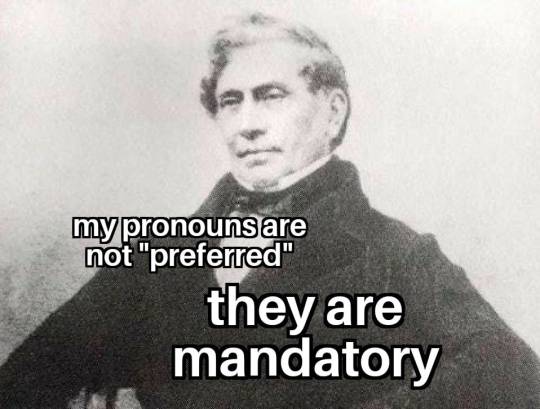
Dr. Barry's biography is available elsewhere, so I won't go into it too deeply here. If you want an entertaining look into his life and work, I recommend the Sawbones podcast episode #178. Instead, I'm going to use this post to situate Dr. Barry's life into the broad sweep of the Anglican tradition.
I've posted before about how the Anglican Church of the early 19th century was an insular and socially ineffective arm of the British aristocracy. Nevertheless, its rites and philosophies were an important part of public life, regardless of how individuals felt about God or the Church--especially for agents of the British Crown, which Dr. Barry was. Outright "atheism" was still rare.
In my research I was not able to find much about his personal religiosity, but Dr. Barry would have been familiar with the scriptures and the Book of Common Prayer. Besides this, he embodied the ideals of Enlightenment humanism, which remain inextricably intertwined with Anglicanism both in the past and continuing into the present.
Dr. Barry was ethnically Irish, and his family experienced anti-Irish and anti-Catholic discrimination. It was thanks to liberal-minded family friends that James was first able to become James, enter medical school, and become a commissioned officer in the British Army. Wherever he was posted, public health improved, because Dr. Barry was a tireless advocate for women, the poor, and enslaved people.
Dr. Barry was constantly getting into fights, and sometimes literal pistol duels, with people who challenged him. (This is a common theme in biographies of historical trans men.) He even got into a fight with Florence Nightingale, who is officially recognized as an Anglican saint for doing a lot of the same work that Dr. Barry did. Dr. Barry is also famous for being the first Westerner to perform a C-section in which the mother and child both survived. This was a procedure that had been successfully practiced in Africa for hundreds of years before colonization, and since Dr. Barry's procedure was performed in colonial South Africa, I don't think it's unlikely that he learned from African traditional medical practitioners as well as Western academic medicine. Coming from a colonized background himself, it may have been easier for him to respect colonized African people than it was for other British imperialists. He embodies what Anglicanism can be at its best: tolerant, curious, courageous, innovative, and orthopraxic. Even during the brutal height of the British Empire, these ideals shone through the darkness, and can be an example for us today.
Dr. Barry's story is also important in an age of resurgent British fascism, particularly the anti-trans sentiment that has earned it the nickname of "TERF Island." He was a trans man, not a "woman who disguised herself as a man in order to become a doctor." He lived as a man, wanted to die as a man, and is remembered as a man on his gravestone. To erase that reality is to erase trans people from the past, present, and future--which is exactly what fascists want. We must not allow that to happen.
#christianity#anglican#episcopalian#queer#trans#pride#saints#james barry is truly one of my favorite historical blorbos so i'm officially elevating him to sainthood#you're welcome england
118 notes
·
View notes
Text

"In memory of William McIntier Esq. Major under General Pepperell at the Reduction of Cape Breton AD 1744." I have no idea what this colonial even was I will have to research it. Another beautiful old gravestone from the 18th century.
Old Feeding Hills Cemetery 10/3/24
6 notes
·
View notes
Text
On the road leading into the center of Concord, Massachusetts, there sits a house.

It is a plain, colonial-style house, of which there are many along this road. It has sea green and buff paint, a historical plaque, and one of the most multi-layered stories I have ever encountered to showcase that history is continuous, complicated, and most importantly, fragmentary, unless you know where to look.
So, where to start? The plaque.

There's some usual information here: Benjamin Barron built the house in 1716, and years later it was a "witness house" to the start of the American Revolution. And then, something unusual: a note about an enslaved man named John Jack whose epitaph is "world famous."
Where is this epitaph? Right around the corner in the town center.
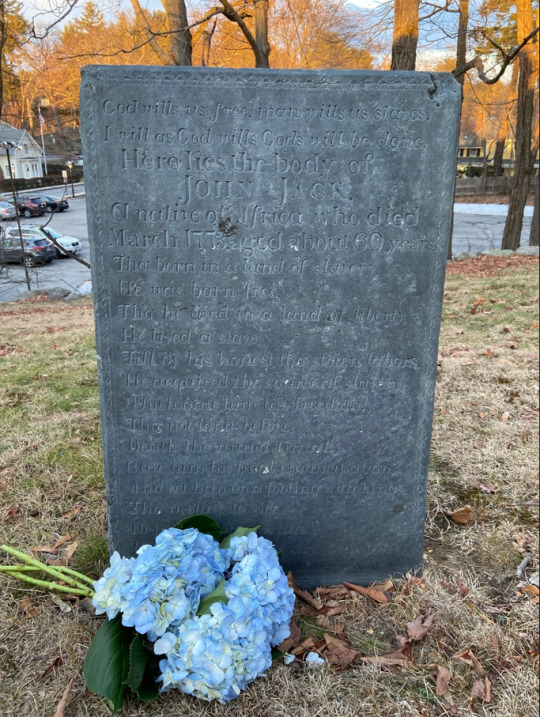
It reads:
God wills us free; man wills us slaves. I will as God wills; God’s will be done. Here lies the body of JOHN JACK a native of Africa who died March 1773 aged about 60 years Tho’ born in a land of slavery, He was born free. Tho’ he lived in a land of liberty, He lived a slave. Till by his honest, tho’ stolen labors, He acquired the source of slavery, Which gave him his freedom; Tho’ not long before Death, the grand tyrant Gave him his final emancipation, And set him on a footing with kings. Tho’ a slave to vice, He practised those virtues Without which kings are but slaves.
We don't know precisely when the man first known only as Jack was purchased by Benjamin Barron. We do know that he, along with an enslaved woman named Violet, were listed in Barron's estate upon his death in 1754. Assuming his gravestone is accurate, at that time Jack would have been about 40 and had apparently learned the shoemaking trade from his enslaver. With his "honest, though stolen labors" he was then able to earn enough money to eventually purchase his freedom from the remaining Barron family and change his name to John, keeping Jack as a last name rather than using his enslaver's.
John Jack died, poor but free, in 1773, just two years before the Revolutionary War started. Presumably as part of setting up his own estate, he became a client of local lawyer Daniel Bliss, brother-in-law to the minister, William Emerson. Bliss and Emerson were in a massive family feud that spilled into the rest of the town, as Bliss was notoriously loyal to the crown, eventually letting British soldiers stay in his home and giving them information about Patriot activities.
Daniel Bliss also had abolitionist leanings. And after hearing John's story, he was angry.
Here was a man who had been kidnapped from his home country, dragged across the ocean, and treated as an animal for decades. Countless others were being brutalized in the same way, in the same town that claimed to love liberty and freedom. Reverend Emerson railed against the British government from the pulpit, and he himself was an enslaver.
It wouldn't do. John Jack deserved so much more. So, when he died, Bliss personally paid for a large gravestone and wrote its epitaph to blast the town's hypocrisy from the top of Burial Hill. When the British soldiers trudged through the cemetery on April 19th, 1775, they were so struck that they wrote the words down and published them in the British newspapers, and that hypocrisy passed around Europe as well. And the stone is still there today.

You know whose stone doesn't survive in the burial ground?
Benjamin Barron's.
Or any of his family that I know of. Which is absolutely astonishing, because this story is about to get even more complicated.
Benjamin Barron was a middle-class shoemaker in a suburb that wouldn't become famous until decades after his death. He lived a simple life only made possible by chattel slavery, and he will never show up in a U.S. history textbook.
But he had a wife, and a family. His widow, Betty Barron, from whom John purchased his freedom, whose name does not appear on her home's plaque or anywhere else in town, does appear either by name or in passing in every single one of those textbooks.
Terrible colonial spelling of all names in their marriage record aside, you may have heard her maiden name before:

Betty Parris was born into a slaveholding family in 1683, in a time when it was fairly common for not only Black, but also Indigenous people to be enslaved. It was also a time of war, religious extremism, and severe paranoia in a pre-scientific frontier. And so it was that at the age of nine, Betty pointed a finger at the Arawak woman enslaved in her Salem home, named Titibe, and accused her of witchcraft.
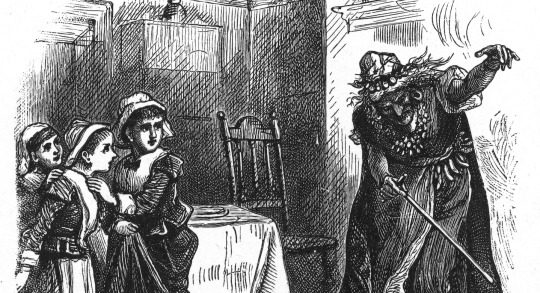
Yes, that Betty Parris.
Her accusations may have started the Salem Witch trials, but unlike her peers, she did not stay in the action for long. As a minor, she was not allowed to testify at court, and as the minister's daughter, she was too high-profile to be allowed near the courtroom circus. Betty's parents sent her to live with relatives during the proceedings, at which point her "bewitchment" was cured, though we're still unsure if she had psychosomatic problems solved by being away from stress, if she stopped because the public stopped listening, or if she stopped because she no longer had adults prompting her.
Following the witch hysteria, the Parrises moved several times as her infamous father struggled to hold down a job and deal with his family's reputation. Eventually they landed in Concord, where Betty met Benjamin and married him at the age of 26, presumably having had no more encounters with Satan in the preceding seventeen years. She lived an undocumented life and died, obscure and forgotten, in 1760, just five years before the Stamp Act crisis plunged America into a revolution, a living bridge between the old world and the new.
I often wonder how much Betty's story followed her throughout her life. People must have talked. Did they whisper in the town square, "Do you know what she did when she was a girl?" Did John Jack hear the stories of how she had previously treated the enslaved people in her life? Did that hasten his desperation to get out? And what of Daniel Bliss; did he know this history as well, seeing the double indignity of it all? Did he stop and think about how much in the world had changed in less than a century since his neighbor was born?
We'll never know.
All that's left is a gravestone, and a house with an insufficient plaque.
8K notes
·
View notes
Text
polar explorers' graves 1/2
I went back to the Powazki to clean the polar explorers' graves, as I had promised. It was challenging because I slept for about three hours that day due to a bad migraine. I didn't have another day off though, so I thought being outdoors would help a bit. It turned out that it was not only Dobrowolski's gravestone that needed cleaning.


Artocho was in worse condition than the last time I was there. His grave is visited more often than Dobrowolski's (probably because it is in a prominent position in the cemetery), but it was dirty.
I was going to light a candle and leave, but as I already had the cleaning equipment, I decided to take a little care of our explorer's resting place.
I started by pouring water on the gravestone and washing off the surface dirt (dust, mud, sand). When I had removed all the dirty water, I put on gloves and a mask. The most tedious part began - the removal of mould and mildew.
I left the liquid in for half an hour and managed to wash the entire nameplate in that time. This was probably the most satisfying part of the job.
I also washed a hollow for a pot because a colony of vermin had taken up residence there. Eww.
(+ but it looked really nice when I was done!)

Unfortunately, I had a small problem when I washed the glass candle. It was so old that all the paint had come off. The other one survived and now Arctowski has patriotic colours 🇵🇱.

And this is how it looks after cleaning:

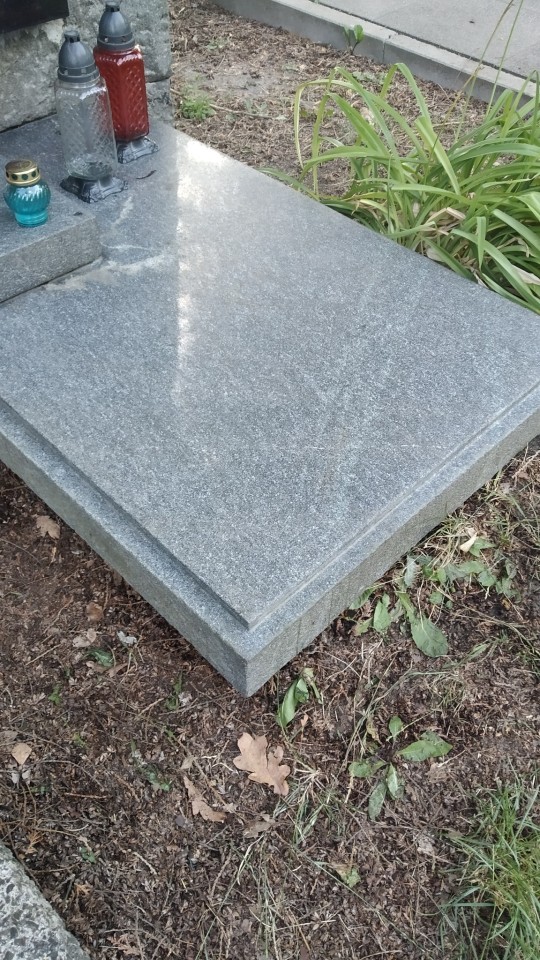
Definitely shinier, cleaner and tidier!
All in all it took me two hours, but the time passed very quickly. In the meantime, I told Artocho about everything that was and is happening in the world. I like to have these monologues and treat the dead as if they could hear me. I think Henryk would be pleased to know that someone cares about his memory.
Tumblr doesn't allow more than one video clip in a post, so I'll show Dobrowolski later, in different post. But it's bound to appear, 'cause I visited him too!
#polar tag#polar expedition#polar exploration#polar explorers#antoni dobrowolski#belgica#belgica expedition#henryk arctowski
14 notes
·
View notes
Text
Hux Crisis #2
I remarked yesterday that I was having another Hux crisis. (The first Hux crisis is documented a little bit here.) Basically, my Hux crises are caused by my personal understanding of him coming into apparent conflict with canon depictions. This also happened to me with Carlos the Scientist from Welcome to Night Vale. The situation isn't great; historically it has caused me to stop writing for a long time while I recalibrated my headcanons.
Because I'm hoping that won't happen this time, I originally wasn't going to discuss it too much, but then this morning I saw this post:
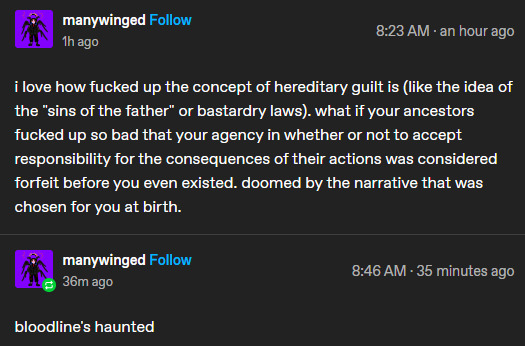
When I saw this, I just felt like that it fit Hux so well. The idea that his family line might be cursed in some way, resulting in all his perceived failures, is narratively compelling to me. It made me want to write down my thoughts and feelings about Hux.
I didn't want to clutter up OP's notes with my nonsense, so I made a screenshot for this post. If you want to see/reblog the original, I reblogged it here.
Let's get into it.
We know JJ named Hux after a name he saw on a gravestone. He wanted Hux to be a tragic character from the beginning. And Hux was. We learned that he'd grown up being abused, and that it's likely he was stolen from his mother when he was taken/rescued from his home planet during the New Republic siege. And of course we saw the tragedy continue through the films:
The stormtrooper program wound up producing a Resistance general
Starkiller Base was destroyed
The Fulminatrix was destroyed
The Supremacy was destroyed
Kylo Ren became Supreme Leader
The First Order failed to wipe out the Resistance on Crait
And finally, Hux was found out as the spy and executed
It could be argued that many of these things were failures on Hux's part. The comics give us even more failures: in Journey to TLJ: Captain Phasma, he does not issue an official evacuation order when Starkiller Base begins to collapse, which enables Phasma to keep troopers who saw her from surviving to report it, and probably also resulted in unnecessary losses. He also seems not to question Phasma's version of how the shields were lowered on Starkiller. In Hyperspace Stories #8, which seems to be set pre-TFA, he loses control of a wild creature called a Bramalish that he set upon a non-cooperative colony.
I get chalking all of this up to incompetence, to thinking that Hux kept failing because he was stupid or prideful.
But we have evidence to the contrary.
Hyperspace Stories #8 also shows us Hux is quick to adapt to change. When Ren arrives to fight the Bramalish, Hux orders the stormtroopers to help him immediately. When Ren brings back the city leader whose cooperation will secure the First Order's power, Hux instantly adjusts to "negotiating with" (threatening) him. While I won't deny that setting a Bramalish loose believing the stormtroopers could contain it was a miscalculation, the strategy was to terrorize the populace, and it worked. That plus Ren's contributions scored the First Order a win.
In the comic Star Wars Adventures #30, set between TLJ and TROS, Hux's plan is to send stormtroopers to Vendaxa to follow a lead that the Resistance might be there. It's Supreme Leader Ren who insists on going personally. Hux goes with him because he sees an opportunity to ingratiate himself to Ren, and he actually manages to get Ren to say he has earned his trust, "for now." It turns out there was no need for the leader of the First Order to go to Vendaxa personally. The Resistance isn't even there, and Ren and Hux wind up in mortal danger. I think it can be safely argued that Hux was right, and circumstances (Kylo Ren) worked against him.
In that same comic, Hux tells Ren, "I put my stormtroopers in charge of reconnaissance because leadership is trusting the people you lead to do their jobs." The loss of the Fulminatrix seems ludicrous in light of these words. Canady stood around waiting to be micromanaged; Hux is not a micromanager. (I ranted about this separately here.)
And then, of course, we have Age of Resistance - General Hux, another pre-TFA story. This is not only where we see more of Hux's abusive childhood, but also where we see him at his craftiest. He uses Ren's identity to manipulate Bylsma, and then he uses the shuttle sabotage to justify killing one of his childhood abusers. From this, it's clear he's not an idiot.
Let's go through the other perceived failures with a more critical eye.
First, the stormtrooper program. Yes, it "failed" in that Finn resisted his conditioning, as did Jannah and her company. But what percentage of stormtroopers actually defected or deserted? How does it compare to other militaries' defection/desertion rates? Is it even possible to have 100% loyalty? While I don't think we know the answer to the first two questions, the answer to the third is absolutely no.
The destruction of Starkiller Base would not have been possible without the shield being lowered. Hux knew the oscillator was a weak point and had it protected, not just by shields but by squadrons of fighters. It took an extraordinary series of events for the Resistance to win.
Trusting Phasma is either a blind spot, or he's playing the long game, as fellow kyluxers pointed out on my original Hux crisis post. Phasma conspired with him to kill Brendol; this was in both their self-interests, not the First Order's. If anything, TLJ cemented their relationship as a partnership. It's not a stretch to think Hux knows Phasma's true loyalty is to herself, and that he considers having her as a partner more advantageous than not. It's a gamble, but she's a powerful ally. I've wondered if their conversation when she returns to the Finalizer is coded...if what Hux is really asking is how well she covered her tracks.
(The fact that he doesn't seem to dwell on the loss of Starkiller, either in the Captain Phasma comic or at the beginning of TLJ, and he just looks annoyed when it's brought up in TROS, implies that he is forward-thinking, which is a vital quality in a leader.)
Hux not managing to keep Ren from becoming Supreme Leader is understandable. He's ready to kill Ren, but Ren stirs. Hux knows he can't defeat Ren in a fight. And unfortunately, Hux has rarely been able to talk Ren into anything. This is the rare moment he breaks emotionally: he's lost Starkiller, he's lost the Supremacy, and now he's lost Snoke, the one thing that has been protecting him from Ren. I don't think his action or inaction here is indicative of his intelligence so much as his trauma.
The battle of Crait wasn't actually lost. It simply wasn't a total victory. And the reason wasn't Hux or his commands. It was Kylo Ren. Without Ren there, the First Order would have wiped the Resistance out.
Hux being found out as a spy was, I've always thought, at least partially because Finn shot him in the leg instead of the arm. You'd think an enemy would aim for the head or chest. The arm would have been a more believable miss location. But of course, it also happened because of Hux's choice to report the escape to Pryde himself instead of going to medbay and sending a subordinate. This one I can't find a good explanation for, except maybe that he thought he would seem more loyal if he went personally. (I like to think it was because he knew Pryde would shoot him, and he took advantage of that to fake his own death.)
I'm showing obvious bias here, but even I can admit Hux isn't flawless. He can make mistakes and succumb to emotions like any other human. I just believe, based on my understanding of canon, that not everything he did was a mistake. In fact, I'd argue that the majority of his failures were due to circumstances outside his control. It's tragic, like JJ intended.
Because of that, I think that cursed family line idea fits really well. Maybe Hux finds out about the curse just when he's on the verge of giving up, and it makes him try even harder out of spite. Could he break free of the curse? Or is he doomed, like every other Hux?
35 notes
·
View notes
Text
The library I work in used to be the village rectory, built in the 18th century. I've been doing some digging into local history books to try and put together a little display of the building's history. I've learned some cool stuff—including that one of the more eccentric Victorian rectors built a massive observatory extension to the rectory (sadly demolished when it became the library) and that Charles Darwin's children used to visit for Sunday school lessons.
(I also learned that the rector who commissioned the building has a name that sounds ridiculously similar to Lord Farquad, which is just plain funny.) But one story I found out today broke my heart. It's about a nine-year-old First Nations boy who died of smallpox in a tiny village in Kent, at least 3000 miles away from his homeland, as the slave of William Pitt the Elder. This is the story of John Panis.

Let me make it very clear: this boy was not named John Panis. We do not know his true name, or how it was stolen from him, or even for certain how he came to be in this tiny corner of England. While his gravestone describes him as "of the Tribe of Panis", "Panis" is not a Native American or First Nations term. It was an 18th-century French term used to describe slaves of First Nations descent in the colony of Canada, then part of New France. Most "Panis" were from the Pawnee Nation, but we don't know for sure that John was Pawnee. What we do know is that it is nearly certain that nine-year-old John was a slave, and it is nearly certain that William Pitt was his enslaver.
To be given a tombstone was a rarity in 18th-century villager life: only the wealthy could afford one. Only 10 grave markers of the 600 or so 18th-century burials recorded in the churchyard survive. So it's significant that, firstly, nine-year-old John had one, and, secondly, that it survived to this day. The wealthiest 18th-century local at the time? William Pitt the Elder, 1st Earl of Chatham.
Pitt supported the American position in the run-up to the American War of Independence. The text I read today suggested that little John was gifted to Pitt by an American to thank him for this, as a "playmate" or "pageboy" for his young children. But with no surviving contemporary records, we simply don't know how he came to be here.
Again, John was not a "playmate" or a "pageboy". He was nine years old. He was a child slave. His name was not John. We do not know his original tribe, name, or language.
I spent my lunch hour today thinking about John, sold into slavery at such a young age, torn from his family, and stripped of his name, language, and people. Sent across an ocean simply to entertain white children. Contracting smallpox, suffering, and dying in agony in a small village in Kent, without the comfort of a mother or father. He was likely put to rest by the very rector who commissioned the building I now work in. I went to find him in the churchyard. His resting place is only a few metres from the library.
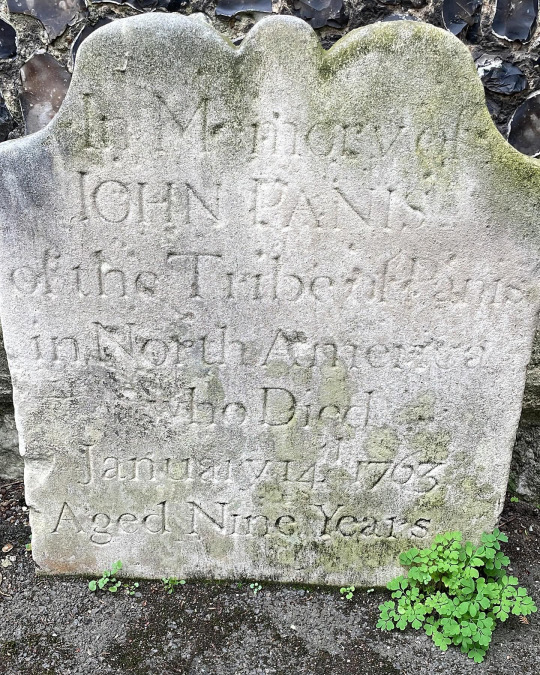
I wonder if he is the ghost I sometimes speak to.
10 notes
·
View notes